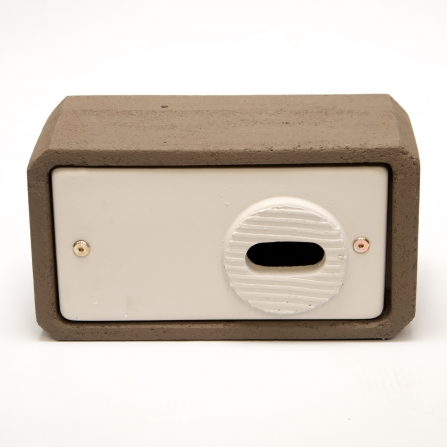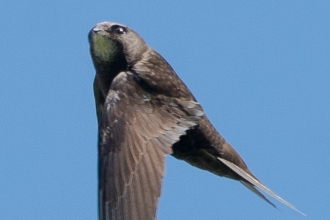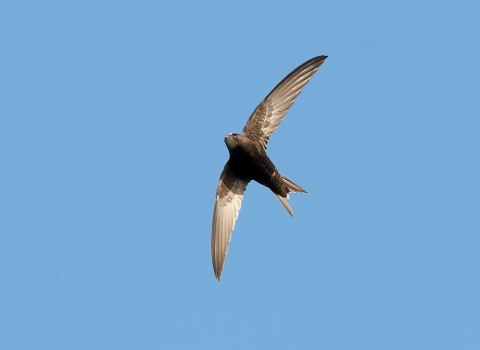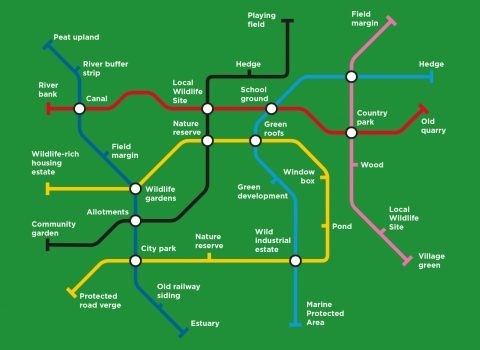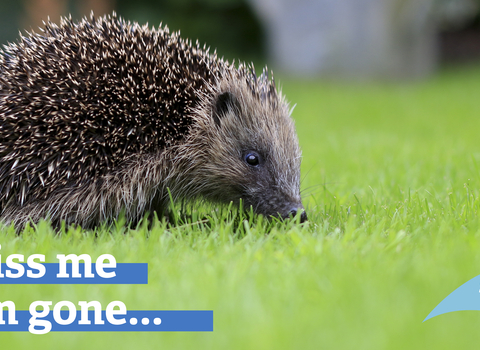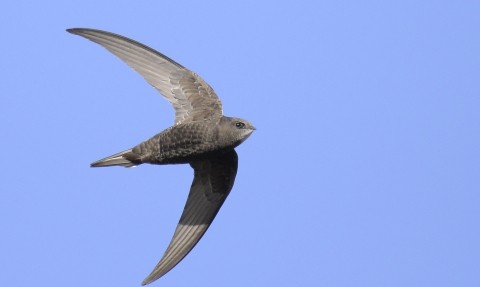
"Detailed Swift" by Kentish Plumber is licensed under CC BY ND 2.0
Help our swifts
Our three counties swift survey is hosted by Northamptonshire Biodiversity Records Centre. You can submit records from Bedfordshire, Cambridgeshire and Northamptonshire.
Strongly associated with buildings and summer skies, the swift is the poster bird for urban nature conservation. The fastest bird in level flight, built for speed and to stay on the wing - including to eat, drink, preen and mate - they only land to nest and raise their young.
They are widespread, well-loved and in trouble. We've lost over half of our swifts in just 20 years, and they are suffering a 4% decline year on year: but there are things we can all do to help. The reasons for the losses are complex and geographically widespread thanks to their annual migration from Africa, but we do know that they need three main things to ensure their success:
- Plenty of flying invertebrates to eat mid-air
- Safe migration routes
- Long-term nesting sites
All of these amount to a connected and rich environment for wildlife, a nature recovery network that allows wildlife to flourish across the country. The Wildlife Trusts work hard on the first one, providing nature reserves and working with other organisations and authorities to create Living Landscapes that support a diverse range of wildlife - and you can help too by gardening with nature and invertebrates in mind; the second is trickier, as they travel each year to Africa and back, though raising awareness of these birds is an important part of looking after their routes; and the third is where you come in.
How you can help
Record your sightings for our survey
Breeding numbers of swifts are declining dramatically in the UK. This is considered to be partly due to the loss of nesting sites, as older buildings are demolished and modern buildings are often not suitable for building nests.
We need information on swift nesting sites from your local area to help us to protect these areas and to plan the installation of new boxes. Swifts begin to return to the UK from late April onward, and will be looking for suitable nest sites.
Please tell us where swifts are nesting or gathering for 'screaming parties'. If you see them congregating on the wing, relatively low in the sky, rising into the air calling to each other with the distinctive screech that earned them the nickname 'devil bird' - that's what we want to know about. We would also like to hear about any nestboxes you know of, whether they are occupied by swifts or not.
Knowing where swifts are nesting, we can help to protect these areas and plan the installation of new boxes.
Swift ID Guide
Preserve existing nest sites
Swifts return to the same nest site year after year, and take a long time to establish a new site if their favoured places disappear due to building work, demolition or blocked access. If you know that swifts are nesting in your building, it's important to maintain access so that returning swifts are not driven away. They can live for around twenty years, so that can mean many successive visits!
Install a swift nestbox
Dick Newell - Action for Swifts
If you have a wall that's at least five metres tall, with a clear flyway in front, then you could install a swift box or brick onto your own home. Modern house designs are often nook-and-cranny-free when it comes to their roof and eaves, but there are many designs of swift box that can be installed to replace these once-common nest sites and encourage them back to your neighbourhood.
As swifts spend much of the year in southern Africa and are only in the UK from late April to August, they only spend about 10 to 12 weeks in their nests. Unlike other birds, they don't usually leave piles of droppings under their nest places, so they're incredibly trouble-free tenants.
Swift nest bricks with entrance holes under the eaves of a house. Barely visible from the outside, internal nest spaces are much more long-lived and easier to maintain than external nest boxes.
There are many commercial swift boxes available, including this one from Vine House Farm, which you can buy online from their shop. This one can be used in place of a conventional brick when building, or mounted on the side of a wall.
If you want to build your own - and this may be the best option if you have a particular space you want to fill under your eaves - then Action for Swifts have a wide range of nest box designs on their website. These include some which are fine for use on a south-facing wall, with in-built protection from the heat of the sun.
If at all possible, internal nest sites are preferable to external boxes, as they are much easier to maintain and will last much longer. But any box is a win for swifts, so we're encouraging everyone to do whatever they can.
Be patient
You may have to be patient. It can take a few years for swifts to find your box, and even when they do, they may not breed for the first year or two. You can encourage them to investigate your new box by playing swift calls nearby, and there is guidance on this on the Swift Conservation website.
Get the owners of local tall buildings involved
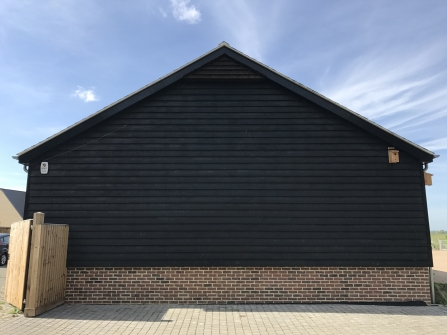
The Trumpington Swift box in situ. Image by Becky Green.
Swift nestboxes or bricks are relatively small and can be extremely unobtrusive. Even larger boxes can be designed to blend in to buildings, such as this one of ours at Trumpington Meadows, and there are plenty of examples of churches installing boxes in belfries and louvres that are completely invisible from the outside but support very successful colonies of birds.
Tall buildings such as churches, car parks, offices and warehouses can often be ideal for installing several boxes to encourage a colony to establish. Action for Swifts have had much success and there are several case studies on their website, including St Neots Church, where 46 nest boxes have been installed which continue to be occupied.
Is there a tall building near you that could be ideal? Could you talk to your local parish council or church steward to discuss the idea? Does your workplace have the perfect wall? Could you point your local church towards our Churchyard Conservation schemes? Swifts need us to have these conversations!
What we're doing for swifts
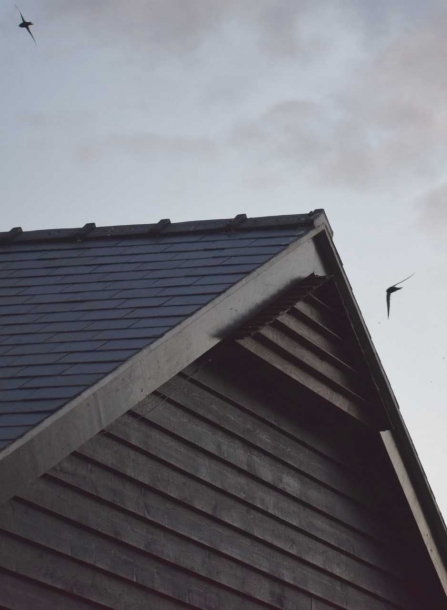
Swift box Trumpington Meadows by Paul Wyer
As well as maintaining our nature reserves for the benefit of all the wildlife that thrives there, which includes providing habitat to ensure the invertebrates are abundant, we also advise other landowners on the management of their land. By working together, we are creating a Living Landscape and a nature recovery network, joining up our reserves and Local Wildlife Sites with other green spaces including churchyards, road verges, meadows and parkland. In this way, our work supports swifts along with all other wildlife for a wilder future.
Swifts recently moved into our new 10-chamber colony box at Trumpington Meadows in Cambridgeshire in the very first year (you can read a news story about that here). In Northamptonshire, All Saints Church, Easton-on-the-Hill, who are part of our Churchyard Conservation Awards scheme, have erected swift boxes and hope to see residents soon. We are working with a number of other churches to encourage swift box installation. Watch this space for news.
Cambourne in Cambridgeshire, where the Trust HQ is situated, was built with wildlife in mind, and that includes swifts. We are currently working to make the village even more swift friendly.
We also have many inspired and engaged volunteers who are doing their bit. Graham Bellamy and others in Bedfordshire have started a Bedfordshire Swift Action Group with Bedfordshire Bird Club and the Bedfordshire Natural History Society. Mark Fitzpatrick in Cambridgeshire has secured funding to help monitoring of a colony in Gamlingay.
We hope you can help us do more!
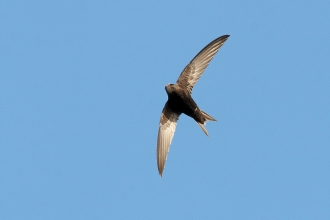
Swift Awareness Week 2021
Swift expert Sarah Gibson explores the early life of these brilliant birds.
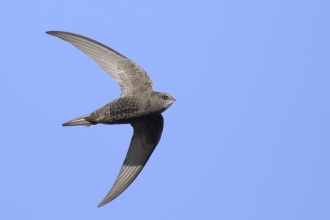
2019 Swift Survey Results
Ryan Clark tells us about the results of the 2019 three-county swift survey and how you can get involved in 2020
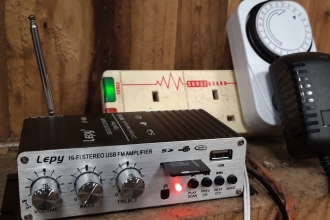
Calling all swifts
How we are using calls to attract swifts at our Cambourne office
The swift conservation community
There are many organisations working tirelessly to help save these scimitar birds. Here are a selection, all of which have further information about ways you can help.

